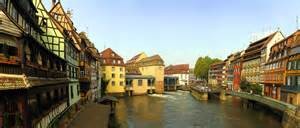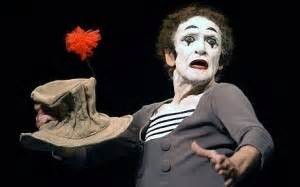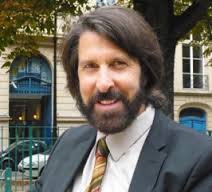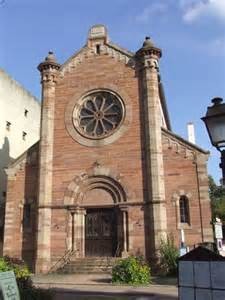Notes from the Lampert Library
 Each year when I visit my daughter in northern France, we travel to nearby part of Europe with the kids. This year we chose the historic city of Strasbourg, site of the European Parliament, in eastern France on the French-German border. Our intrepid guides, James and Amy, led us flawlessly through France, Belgium, Luxembourg (where we studiously avoided Burger King and Dunkin Donuts at the rest stop) and back into France and provided lots of laughs along the way. (James and Amy are the British and American voices on the GPS.) You never know what kids will find to amuse themselves as they created scenarios for the “guides.”
Each year when I visit my daughter in northern France, we travel to nearby part of Europe with the kids. This year we chose the historic city of Strasbourg, site of the European Parliament, in eastern France on the French-German border. Our intrepid guides, James and Amy, led us flawlessly through France, Belgium, Luxembourg (where we studiously avoided Burger King and Dunkin Donuts at the rest stop) and back into France and provided lots of laughs along the way. (James and Amy are the British and American voices on the GPS.) You never know what kids will find to amuse themselves as they created scenarios for the “guides.”
Because of its location, Strasbourg has had an interesting history bouncing back and forth between France and Germany depending upon the vagaries of war although its origins are German. The differences between the Alsace area and western France are clear. The architecture, the regional accent, the food all have a distinctly German feel with a strong French veneer.
Strasbourg and the Alsace region have a long and rich Jewish presence dating back hundreds of years. The first recorded mention of the Jewish community was in 1165 when the Jewish world traveler Benjamin of Tudela passed through on his way to Asia a hundred years before Marco Polo. Rabbi Meyer of Rottenberg lived in Strasbourg for some time. In 1349 during the time of the Black Death, the Jews were accused of poisoning the local wells; on February 14 hundreds were massacred and Jews were no longer allowed to live in the city. Consequently they settled in the many small towns in the area and often became cloth or cattle merchants. Indeed, even today many local cattle merchants are Jews. Almost every town of any significance had a synagogue and active Jewish population.
In 1681, the area became French and Jews were soon admitted back to town. By 1790, Jews in Alsace and neighboring Lorraine made up three quarters of the 40,000 Jews of France. With the French Revolution the status of the French Jews improved with Emancipation in 1790 and 1791. In some communities the rabbis were even paid by the state.
World War II, of course, affected the area’s Jews and Jewish institutions. Many Jews were killed; some were evacuated to other parts of France and many were able to escape. The magnificent synagogue was destroyed. However, many of the smaller synagogues in the surrounding towns were spared as they were put to other uses by the Germans and were rededicated after the war.
 Strasbourg and the surrounding area was the home of many well-known figures: the world famous mime Marcel Marceau; Sam Marx, father of the Marx brothers; movie mogul brothers William and Robert Wyler (Ben-Hur, Funny Girl, Roman Holiday); Leon Blum, first Jewish prime minister of France; Alfred Dreyfus, writer Androis Maurois and Cerf-Berr, ancestor of publisher Bennet Cerf.
Strasbourg and the surrounding area was the home of many well-known figures: the world famous mime Marcel Marceau; Sam Marx, father of the Marx brothers; movie mogul brothers William and Robert Wyler (Ben-Hur, Funny Girl, Roman Holiday); Leon Blum, first Jewish prime minister of France; Alfred Dreyfus, writer Androis Maurois and Cerf-Berr, ancestor of publisher Bennet Cerf.
Contemporary Jewish life is active. Our personal experience with the small Jewish world began, of course, on the internet looking for a synagogue to attend on my father’s yahrzeit. We found the liberal synagogue, located conveniently close to the tram that we used to get from the apartment we rented on the outskirts of the city. Imagine a cold rainy day, two adults and two children wandering around from attraction to attraction while trying to stay dry. Finally we four damp people went to the address on rue de Puits. It was an ordinary building, unmarked and with locked doors. We rang and entered a large, bright room sparsely furnished but filled with people gathered toward the back, surrounding an aron hakodesh and singing Kabbalat Shabbat. We could have been most anywhere. The tunes were familiar, the arrangement of the siddur was familiar, even the rabbi’s remarks struck a familiar note as he spoke about the film Selma, Abraham Joshua Heschel, Martin Luther King and their philosophical brotherhood and its relationship to Torah. The service ended and we were invited to join with the congregation in a potluck dinner with foods familiar to any New Jersey Jew: pasta salad, herring, gefilte fish, tzimmes and delicious Alsatian apple cake, sometimes known as Hanukkah apple cake because it is made with oil instead of butter.
 But the strangest connection was with the rabbi, Stephen Berkowitz, a graduate of the Reconstructionist Rabbinical College and a native of New Rochelle; NY. Rabbi Berkowitz has been in France for many years, serving liberal and Masorti congregations in Paris and now Strasbourg. In addition he teaches and writes. But strangest of all is the people and places that we had in common. And then we met an American expat from California, a contemporary of my daughter. From her we learned much about Strasbourg and Alsace, how the surnames Meyer and Dreyfus are so common that people must identify themselves by town.
But the strangest connection was with the rabbi, Stephen Berkowitz, a graduate of the Reconstructionist Rabbinical College and a native of New Rochelle; NY. Rabbi Berkowitz has been in France for many years, serving liberal and Masorti congregations in Paris and now Strasbourg. In addition he teaches and writes. But strangest of all is the people and places that we had in common. And then we met an American expat from California, a contemporary of my daughter. From her we learned much about Strasbourg and Alsace, how the surnames Meyer and Dreyfus are so common that people must identify themselves by town.
 We continued our exploration by visiting several area towns with their 19th century synagogues and Rue des Juifs and other landmarks to identify the Jewish community. The synagogue in Obernai still functions. Set just within the old city walls, it is a strong looking building that speaks to the prosperity and solidity of the Jewish community that built it.
We continued our exploration by visiting several area towns with their 19th century synagogues and Rue des Juifs and other landmarks to identify the Jewish community. The synagogue in Obernai still functions. Set just within the old city walls, it is a strong looking building that speaks to the prosperity and solidity of the Jewish community that built it.
While the weather never improved much, we learned a great deal about this most interesting section of France where Ashkenazi Jewish custom still holds sway and traces of Jewish life abound.
Related books:
Benbassa, The Jews of France
Cameron, The Fruit of her Hands
Halter, The Book of Abraham
Nathan, Quiches, Kugels and Couscous: My search for Jewish Cooking in France
Shulevitz, The Travels of Benjamin of Tudela
- Is It Passover Yet? - Thu, Apr 18, 2024
- MESH Report April 9, 2024 - Thu, Apr 11, 2024
- Guess Who? - Wed, Mar 13, 2024

Thank you for all this information with a personal touch. I feel like I am travelling with you and your family!